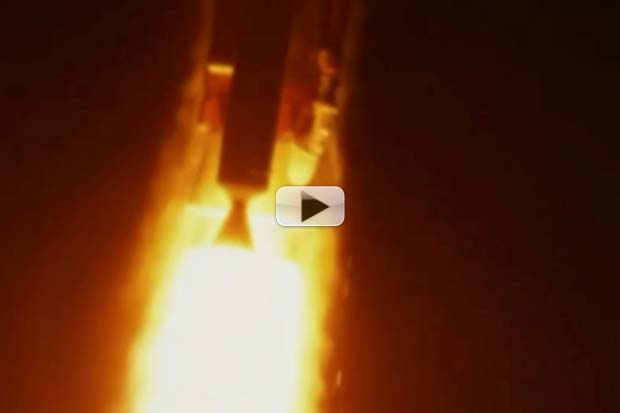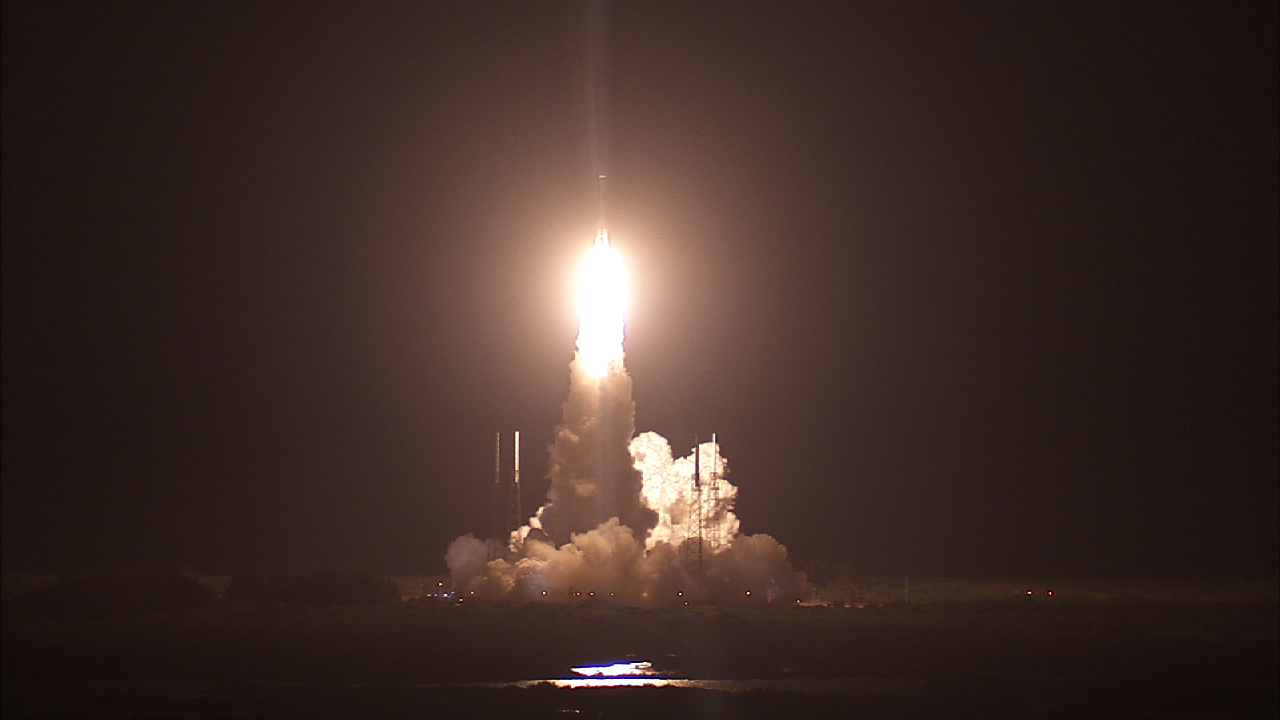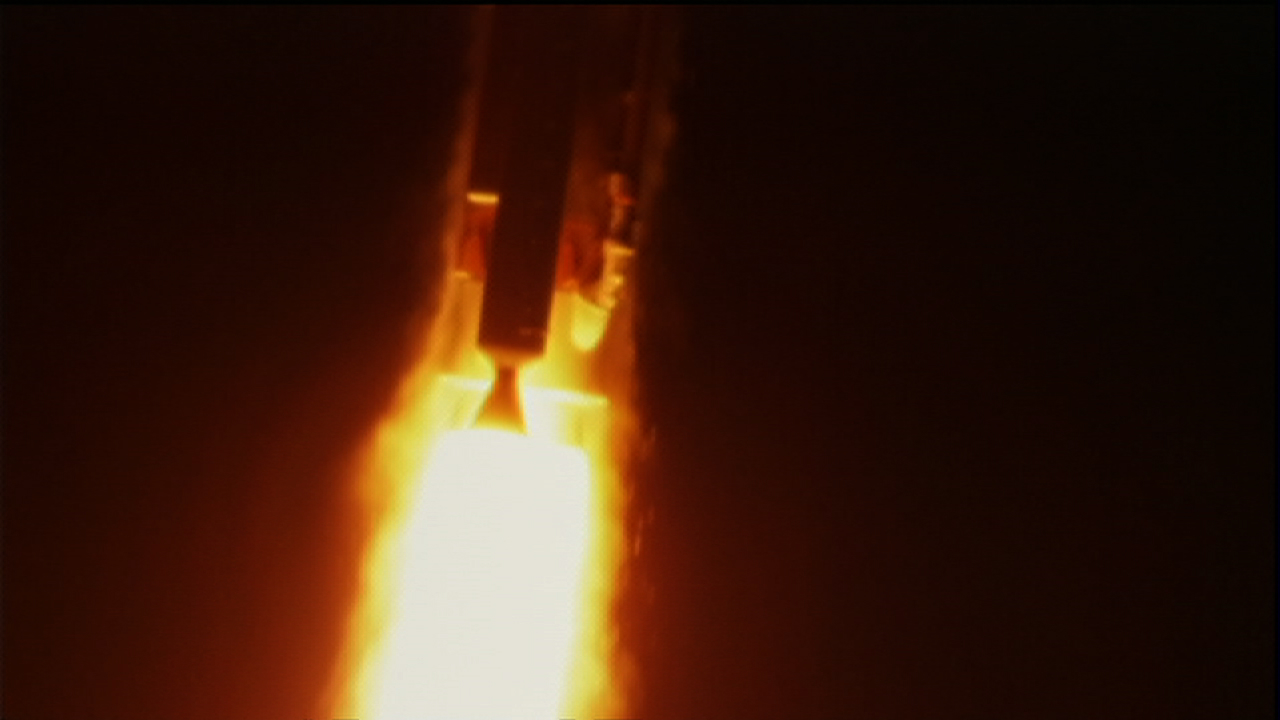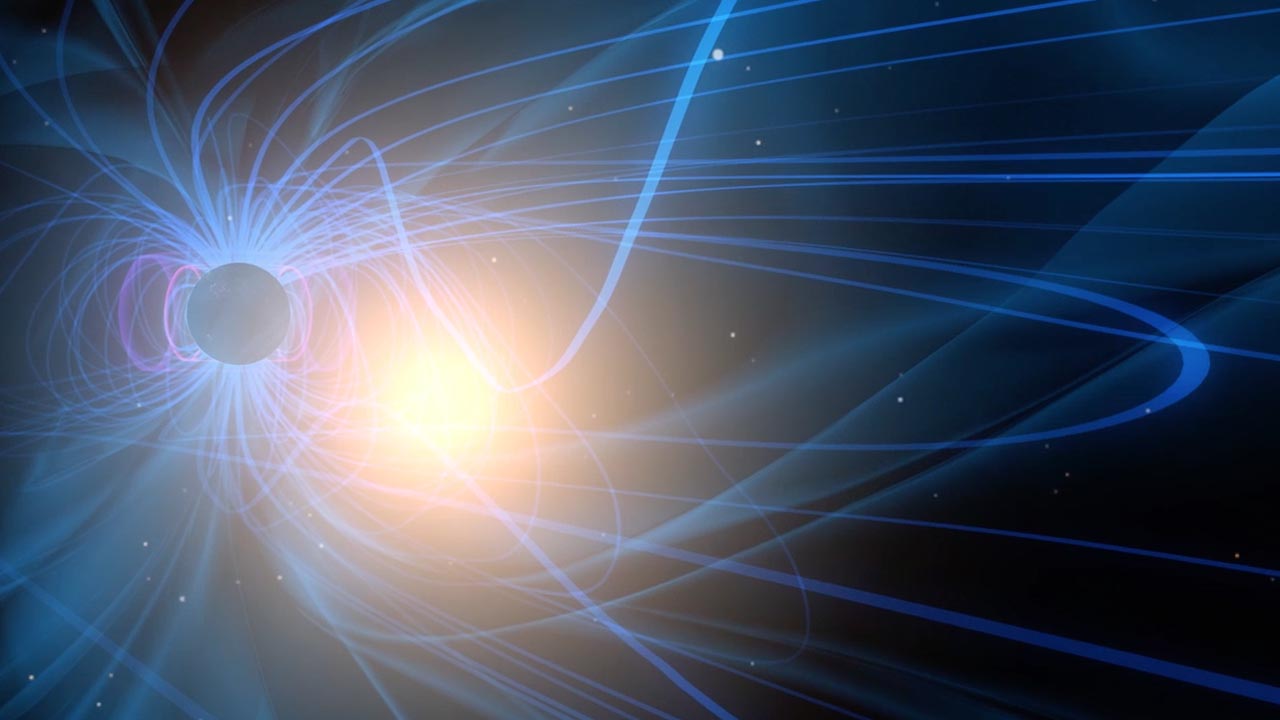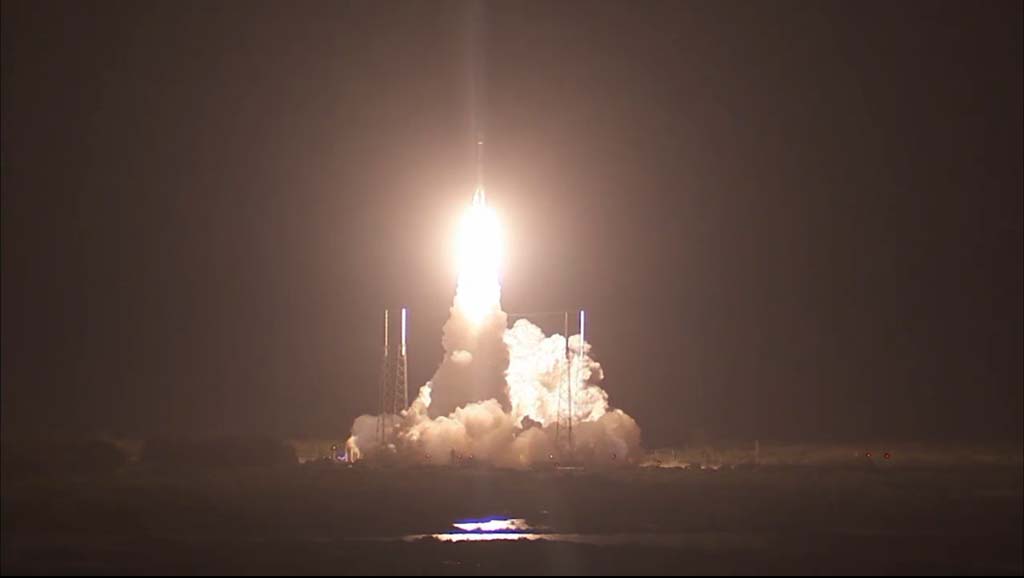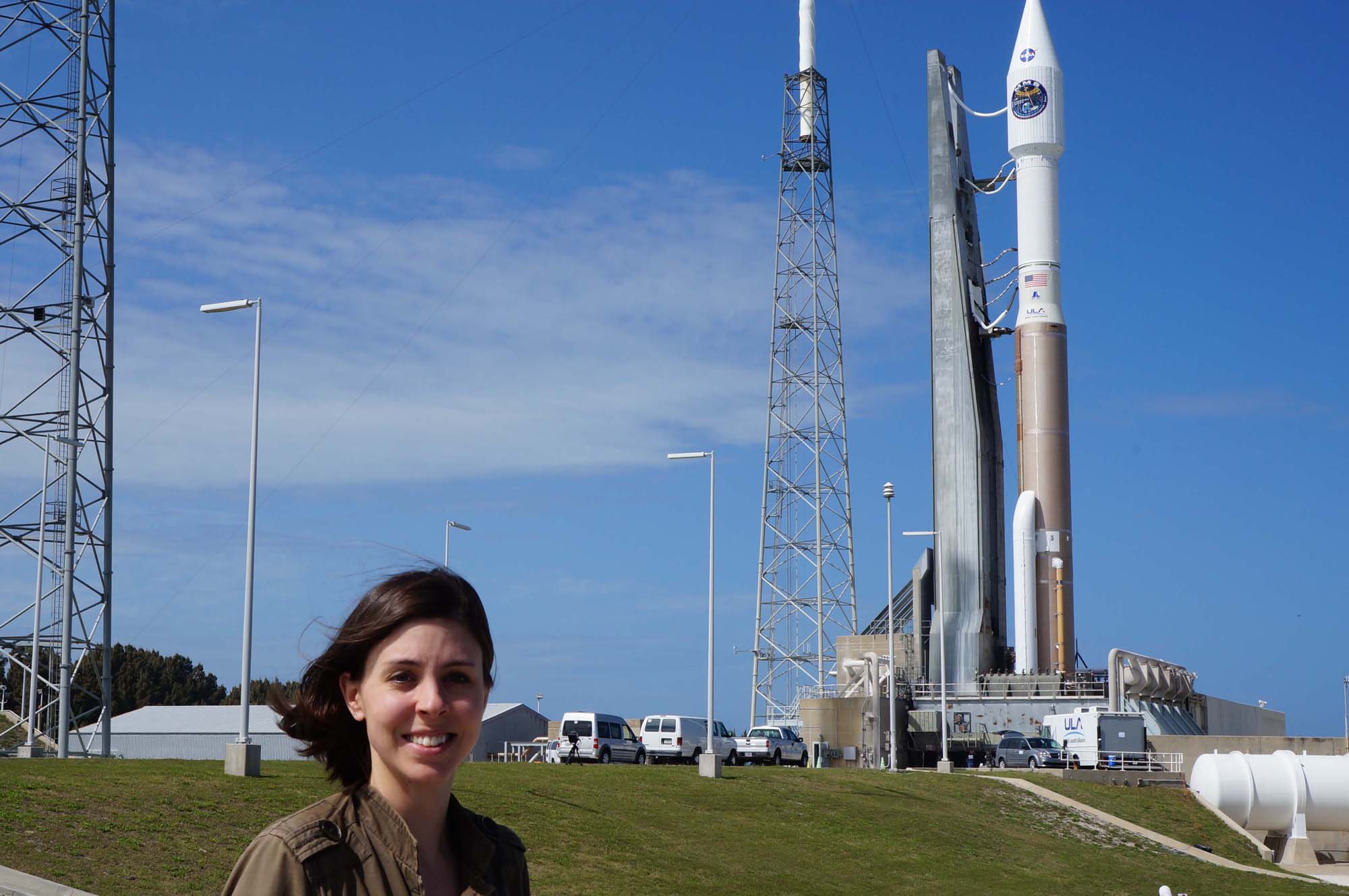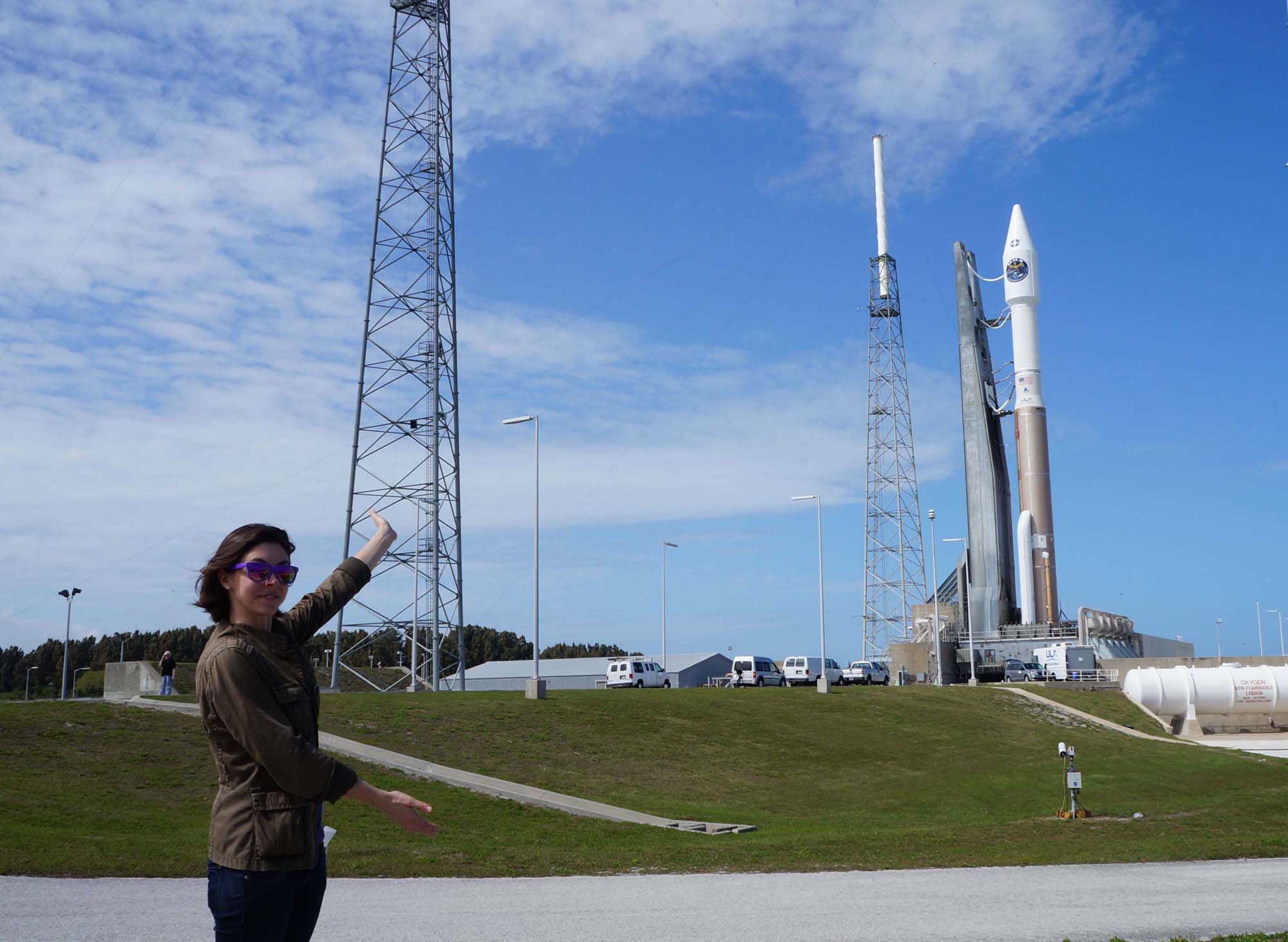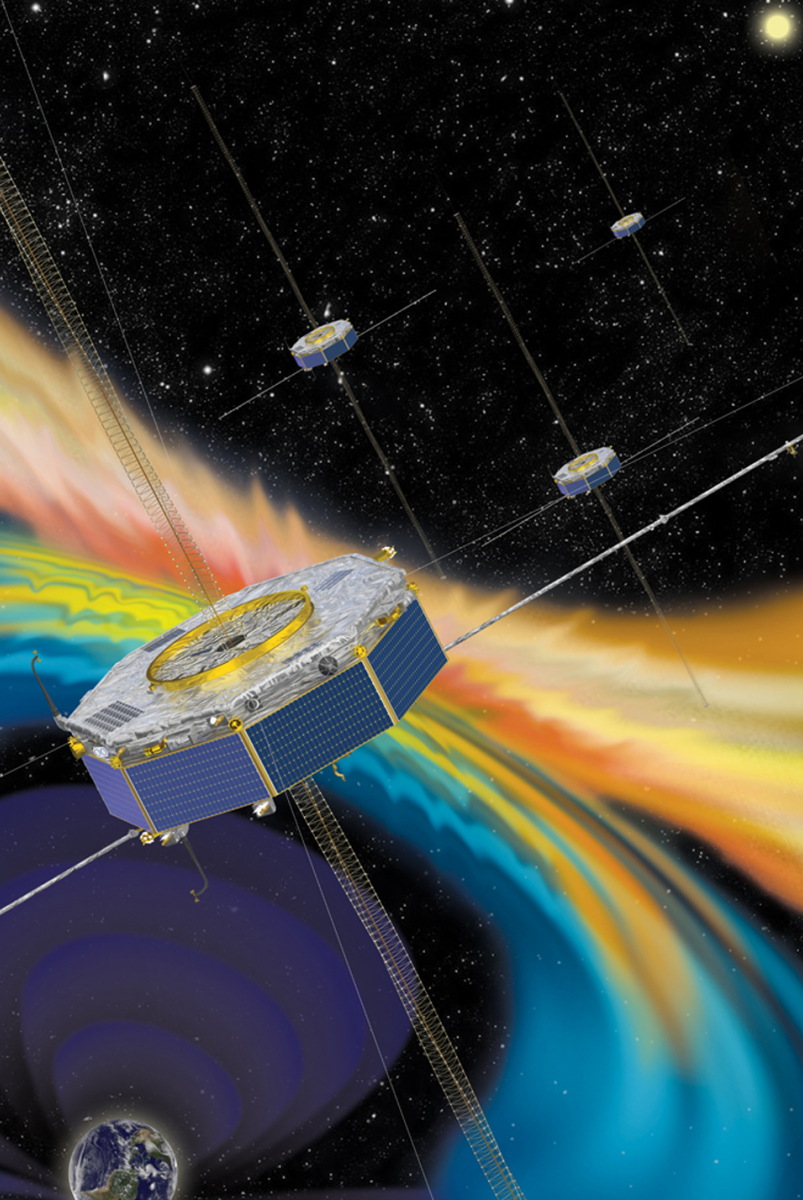Satellite Quartet: NASA's Magnetospheric Multiscale Mission in Pictures
NASA's Magnetic Field Explorers
In March 2015, NASA is launching the Magnetospheric Multiscale mission, or MMS, to study how magnetic fields of the Earth and sun release energy in events known as "magnetic reconnection." See images and photos from the novel space mission, which includes a team of four satellites, in our gallery here.
LIFTOFF for Atlas V
Watch NASA's four MMS satellites blast off at 10:44 pm ET on March 12, 2015 in this video of the Atlas V rocket.
Liftoff for NASA's MMS Satellites!
NASA's four Magnetospheric Multiscale satellites launch into space atop a United Launch Alliance Atlas V rocket in a late night blastoff from Cape Canaveral Air Force Station in Florida on March 12, 2015.
How MMS Satellites Study the Magnetic Fields of Earth and Sun (Infographic)
A constellation of four satellites orbit through Earth's magnetic field to study the mysterious phenomenon called magnetic reconnection. See how NASA's Magnetospheric Multiscale mission works in our infographic.
Atlas V Engines Launching MMS
The business end of the United Launch Alliance Atlas V rocket that launched NASA's Magnetic Multiscale mission into orbit from Florida's Cape Canaveral Air Force Station on March 12, 2015.
Visualization of Magnetic Reconnection
A still taken from a video visualization shows magnetic reconnection in the Magnetospheric Multiscale, or MMS, mission movie trailer. The blue lines surrounding Earth depict the magnetic field lines of the magnetosphere and the bright point indicates the moment of reconnection.
Atlas V Launches NASA MMS Mission
An Atlas V rocket streaks into space from Cape Canaveral Air Force Station in Florida on March 12, 2015 on a mission to deploy NASA's four Magnetospheric Multiscale satellites into orbit to hunt for magnetic reconnection events in Earth's magnetic field.
Breaking space news, the latest updates on rocket launches, skywatching events and more!
NASA MMS Satellites Launch
NASA's four Magnetospheric Multiscale satellites launch into space atop a United Launch Alliance Atlas V rocket in a late night blastoff from Cape Canaveral Air Force Station in Florida on March 12, 2015.
Calla Cofield with MMS Mission Atlas V 1
Space.com reporter Calla Cofield at Space Launch Complex 41 at Cape Canaveral Air Force Station in Florida. The Magnetospheric Multiscale mission is loaded up on top of an Atlas V rocket and is set to launch tonight (March 12) at 10:44 p.m. EDT (0244 GMT March 13).
Calla Cofield with MMS Mission Atlas V 2
Calla Cofield at Space Launch Complex 41 at Cape Canaveral Air Force Station in Florida. The Magnetospheric Multiscale mission is loaded up on top of an Atlas V rocket and is set to launch tonight (March 12) at 10:44 p.m. EDT (0244 GMT March 13).
MMS in Orbit Graphic
An artist's illustration shows the four MMS spacecraft in orbit within Earth's magnetic field.

Calla Cofield joined Space.com's crew in October 2014. She enjoys writing about black holes, exploding stars, ripples in space-time, science in comic books, and all the mysteries of the cosmos. Prior to joining Space.com Calla worked as a freelance writer, with her work appearing in APS News, Symmetry magazine, Scientific American, Nature News, Physics World, and others. From 2010 to 2014 she was a producer for The Physics Central Podcast. Previously, Calla worked at the American Museum of Natural History in New York City (hands down the best office building ever) and SLAC National Accelerator Laboratory in California. Calla studied physics at the University of Massachusetts, Amherst and is originally from Sandy, Utah. In 2018, Calla left Space.com to join NASA's Jet Propulsion Laboratory media team where she oversees astronomy, physics, exoplanets and the Cold Atom Lab mission. She has been underground at three of the largest particle accelerators in the world and would really like to know what the heck dark matter is. Contact Calla via: E-Mail – Twitter

